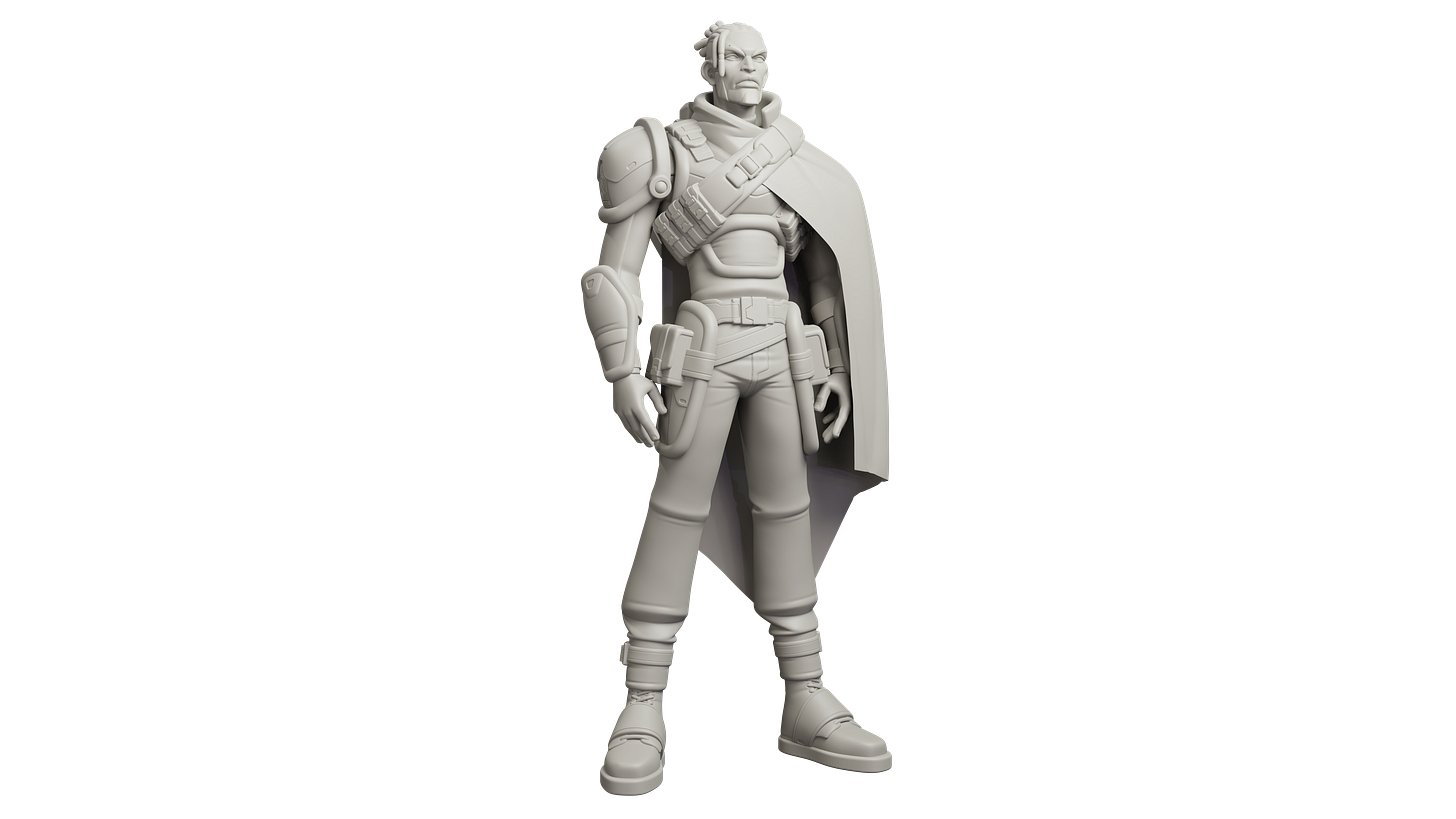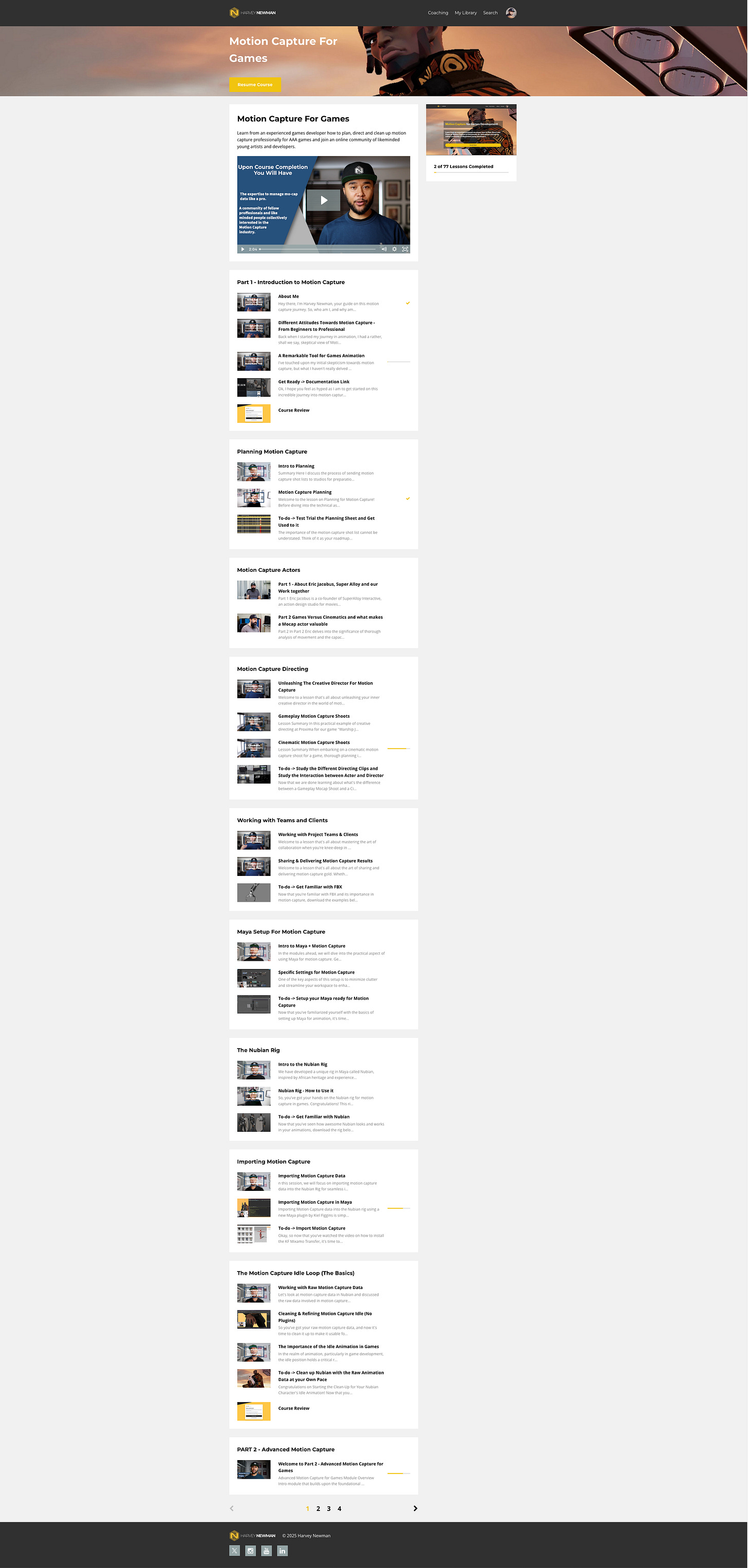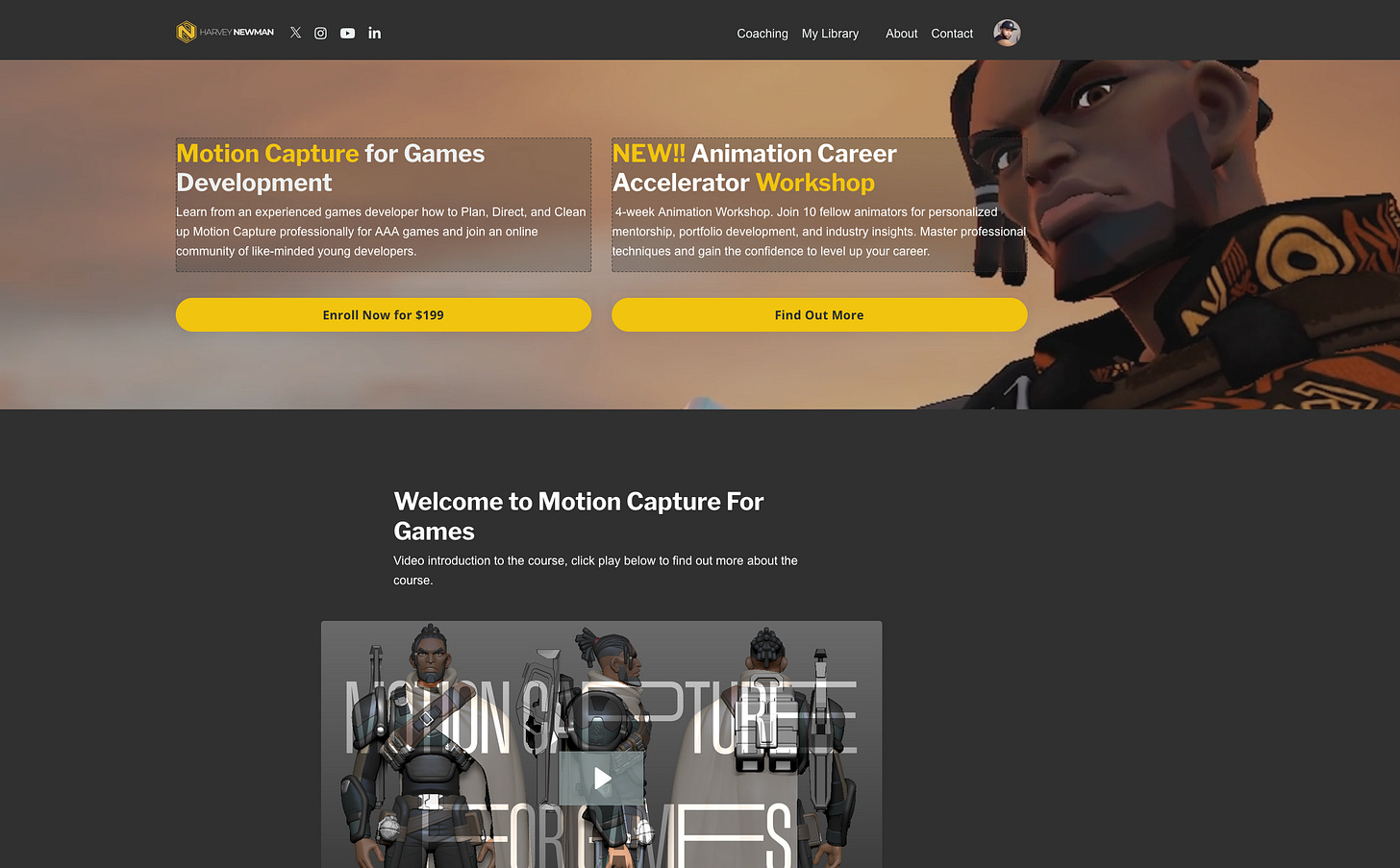Unveiling Part 3: Exploring the Art of Cinematics in Games
The final piece of the puzzle: directing, performance, and facial capture for cutscenes.”
Excited to share this news with you all - Part 3 of my Motion Capture for Games course is officially live! After months of preparation and countless hours of refining the content, I can finally pull back the curtain on what I consider one of the most fascinating aspect of game mocap: cinematics.
This final installment has been brewing in my mind for quite some time, and I'm thrilled to finally share my passion for the intricate world of cinematic motion capture with you. A deep dive into territory that many mocap professionals find both challenging and incredibly rewarding.
Looking Back: The Journey So Far
Let me take a moment to reflect on what we've accomplished together:
Part 1 was where I laid the foundation - and honestly, it felt like coming home. I remember crafting those lessons with newcomers in mind, but I was pleasantly surprised by how many industry veterans told me they found value in revisiting the fundamentals. There's something beautiful about going back to basics. We covered everything from initial planning and directing techniques to those crucial first steps in data handling. I wanted to make sure everyone had solid ground to stand on before we ventured into more complex territory.
Part 2 took us into the professional realm, and I won't lie - this was where I really got to flex my experience muscle. We explored AAA-level cleanup techniques and pipeline workflows that I've refined over years of working with major studios. The feedback from this section has been incredible, with many of you sharing how these methods transformed your approach to mocap data. Seeing your "aha moments" in the comments has been one of the most rewarding parts of this entire journey.
Enter the World of Game Cinematics
Now, here's where things get really interesting. Part 3 ventures into cinematics. You see, cinematics in games aren't just glorified cutscenes that interrupt gameplay. They're this fascinating hybrid beast that lives at the intersection of film and interactive media.
I've spent countless hours in capture volumes working on both gameplay and cinematic sequences, and the differences are staggering. When I'm directing talent for gameplay capture, I'm thinking about loops, variations, and how movements will feel under player control. But cinematics? That's a completely different creative language.
In film, cinematics flow in that beautiful, linear narrative we're all familiar with. But in games, they have to dance with the game engine, blend seamlessly with gameplay systems, and tell stories within the technical constraints of real-time rendering. It's like being a filmmaker who also has to be an engineer - and I absolutely love that challenge.
What You'll Discover in Part 3
I've packed this module with insights that I wish someone had shared with me when I first started working on game cinematics:
The Technical Side: I'll walk you through the unique challenges of creating cinematics specifically for games. We're talking about workflows that balance artistic vision with technical reality, and I'll share some hard-won lessons about what works and what definitely doesn't.
The Studio Perspective: Here's something fascinating - gameplay and cinematics aren't just technically different, they're prioritized differently within studios. I'll give you the inside scoop on how these priorities shape everything from budget allocation to talent direction.
Directing for Emotion: Directing talent for cinematic capture, especially when facial capture and emotional performance are involved, requires a completely different toolkit than gameplay direction. I'll share techniques I've developed over years of working with actors in the volume.
Real-World War Stories: I'm pulling back the curtain on actual projects I've worked on, sharing both the triumphs and the spectacular failures that taught me the most valuable lessons. These aren't sanitized case studies - they're real experiences with all the messy, human details intact.
A snippet on Directing Actors in Motion Capture for Games
A Special Celebration
To mark this milestone and celebrate the 4th of July, I'm doing something I don't do often - offering a 15% discount for one week only. I know many of you have been waiting for the complete series, and this feels like the perfect moment to make the full course more accessible.
But beyond the discount, I want to extend an invitation. If you know colleagues, friends, or aspiring mocap artists who might benefit from this knowledge, please share this with them. The motion capture community has given me so much over the years, and I want to pay that forward by helping as many people as possible level up their skills.
The Road Ahead
As I wrap up this trilogy of courses, I'm already thinking about what comes next. The responses I've received, the questions you've asked, and the challenges you've shared have sparked ideas for future content that I'm genuinely excited to explore.
But for now, I want to savor this moment with you. Three comprehensive modules covering everything from fundamentals to AAA pipelines to cinematic artistry - it's been an incredible journey to create, and I hope it's been equally valuable to experience.
I can't wait to see what you create with all this new knowledge. The motion capture world is evolving rapidly, and I'm confident that the skills we've explored together will serve you well as you push the boundaries of what's possible.
Until next time, keep experimenting, keep learning, and most importantly, keep that creative fire burning bright!
– Harvey
P.S. - Don't forget, this 15% discount is only available for one week. If you've been on the fence about diving into motion capture or completing the full series, now's your moment!
Watch the youtube video announcement:







